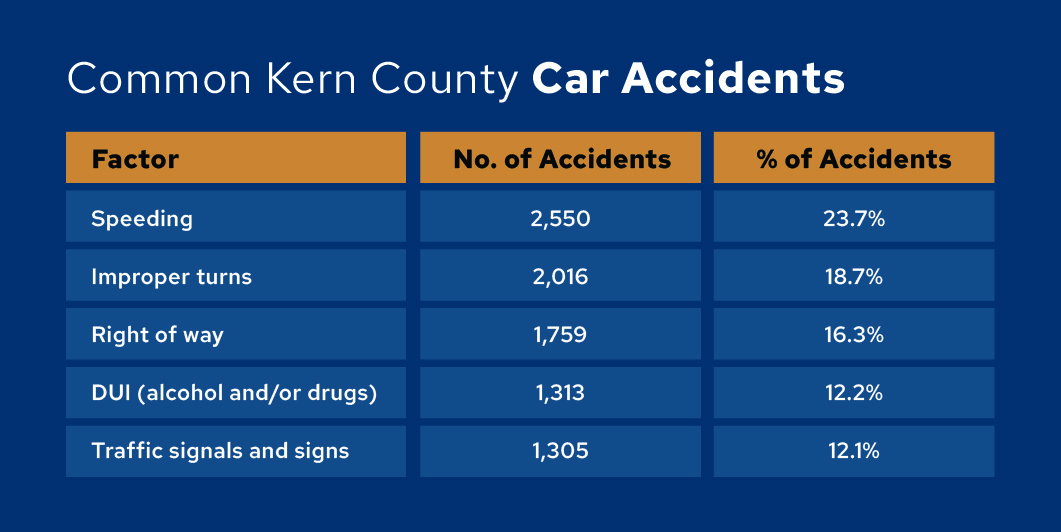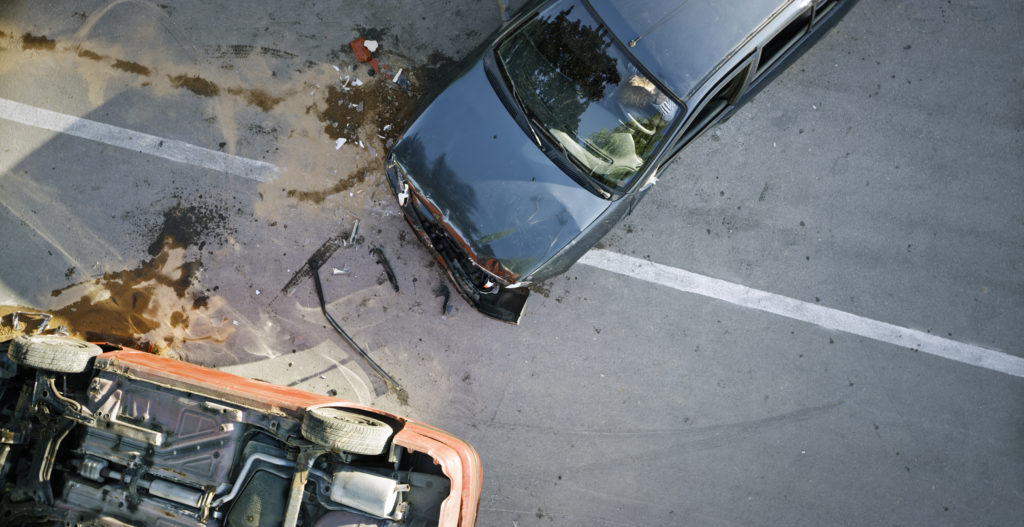Kern County Car Accident Lawyers
Dangerous Roads: Kern County Car Accidents
According to National Highway Traffic Safety Administration (NHTSA) statistics, Kern County dangerous roads—from highways like State Route 99 and State Route 58 to Bakersfield thoroughfares like Truxton and Chester Avenues—are deadly.
The NHTSA uses fatality rates to compare road safety in different locations. One such statistic is the number of car accident fatalities each year per 100,000 population. In 2021, Kern County’s traffic fatality rate was more than twice the average rate for California counties: 22.99 versus 10.92.
Road conditions contribute to some car crashes. For example, glass beads mixed into the paint that lines our roadways reflect light at night, helping drivers see the road in the dark. But once the glass beads wear off, the road stripes are no longer reflective.
A recent Kern County grand jury report was critical of both Bakersfield and Kern County for not having adequate systems in place to make sure our roads are re-striped before their reflective ability is gone.
But according to California’s Transportation Injury Mapping System (TIMS), the most dangerous time to drive in Kern County isn’t at night—it’s from 3 p.m. to 6 p.m. More than 21% of Kern County crashes occur during afternoon rush hour.

What Are the Most Common Causes of Kern County Car Crashes?
The latest TIMS data (covering 2021–2023) pinpoint just five factors that account for 83% of Kern County collisions.
The TIMS database does not have records of accidents caused by distracted driving. But driving with any kind of distraction—whether you’re texting or fixing your makeup—can pull your attention away from the road long enough to cause a crash.
What Kind of Law Firm Is Chain | Cohn | Clark?
- A recognized law firm. This year, we were again voted “Best Law Firm” and “Best Personal Injury Lawyer” in The Bakersfield Californian’s Best of Kern County readers choice poll.
- A law firm that gets results. Chain | Cohn | Clark has recovered nearly a billion dollars for our clients in personal injury cases—including multiple multimillion-dollar car accident cases.
- A local law firm. With an out-of-town firm, you may never meet your lawyer. Most of our lawyers are Kern County natives. We’re your neighbors. And with us, you’ll meet your attorney on day one.
- A respected law firm. The Kern County legal community and insurance industry—judges, attorneys, and insurance adjusters—know and respect our firm. With us, you’ll be taken seriously.
Client Stories
The accolades that mean the most to us are the notes that come from our clients. Here are a few of their stories:
Ronald was injured when a driver made an illegal U-turn in front of him. “I didn’t even have to ask many questions because everything was explained to me before I even had a chance to ask a question,” he says. Commenting on his case, he adds, “I would say the experience was almost perfect.”
Mario was hurt in a crash when a driver ran a red light in front of him. “From my first meeting, they showed me that they actually cared. Everyone went above and beyond to work on my case,” he says. “It wasn’t until I was a client that I realized that [Chain | Cohn | Clark’s] commercials were accurate—they actually do care here about their clients. Overall, they have a good team that takes good care of clientele.”
Carol injured her back in a car accident. “[Chain | Cohn | Clark is] really out to take care of you. The way they treat you is phenomenal. You just can’t really understand how great it is to be treated with respect after going through something like this—they really care. This is the best place to go for legal help with an accident.”
Why Hire Chain | Cohn | Clark?
Many people hesitate to seek legal help with a car accident because they’re worried about the cost. But there’s good news on that front.
The car crash attorneys at Chain | Cohn | Clark don’t charge anything up front. Instead, your lawyer is paid after you receive a settlement or a jury award. Then, their payment is a pre-agreed percentage of your compensation.
You deserve fair treatment. You don’t have to go up against the insurance company by yourself. When we work together on your case, here’s what you can expect:
You’ll know your lawyer—personally
You'll meet the lawyer who will handle your case at your first appointment, and you’ll be able to stay in touch throughout the process.
We’ll support you in any way we can
We'll handle the legal filings, research, and negotiations. And if we need to, we'll argue your case in court.
We’ll keep you in the loop
We’ll guide you through the legal process, but it’s your case. We’ll make sure you have the information you need to decide what’s best for you and your family.
Contact Us Today
for your free case evaluation
Fill out the simple form below and we’ll contact you about your case right away.


